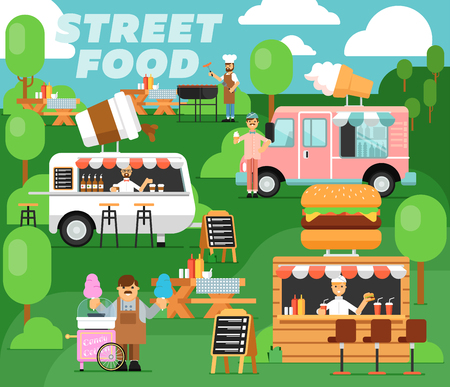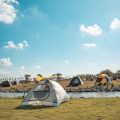The Beauty of Make-Ahead Campfire Meals
There’s a special kind of magic that happens when you blend the simplicity of nature with the comfort of a meal prepared with care. Prepping your campfire dinners at home sets the stage for more meaningful moments outdoors. It means less time fussing over ingredients and more time soaking up the wild—watching the sunset, listening to crackling flames, or sharing stories beneath a starry sky. Make-ahead meals let you embrace the spirit of camping without sacrificing flavor or ease. By doing most of the work in your own kitchen, you’re free to travel light, reduce food waste, and savor nourishing dishes that are ready to heat and eat by the fire. The result? Effortless outdoor dining that feels both cozy and connected to the world around you.
Smart Prep: Ingredients and Gear Checklist
Getting ready for a make-ahead campfire dinner starts with thoughtful planning. The right ingredients and sturdy, camp-friendly gear keep your outdoor cooking simple and satisfying. Here’s a streamlined checklist to help you pack efficiently—so nothing gets left behind when it’s time to head into the wild.
Essential Ingredients for Campfire Dinners
| Ingredient | Purpose |
|---|---|
| Protein (chicken, beef, tofu, sausage) | Main energy source, pre-marinated or pre-cooked saves time |
| Sturdy Veggies (potatoes, carrots, bell peppers, corn) | Hold up well in transport and over fire |
| Quick-Cook Grains (rice, couscous, quinoa) | Adds bulk, easy to prepare at camp |
| Tortillas or Buns | No utensils needed, handy for wraps or sandwiches |
| Cheese & Sauces | Add flavor and richness to meals |
| Cooking Oil or Butter | For sautéing and keeping food from sticking |
| Dried Herbs & Spices | Enhance taste without taking up space |
Campfire-Friendly Cooking Gear
| Equipment | Why You Need It |
|---|---|
| Cast Iron Skillet or Dutch Oven | Durable, evenly cooks over open flames |
| Foil Packets or Heavy-Duty Aluminum Foil | Makes prep easy at home; toss on coals at camp |
| Long-Handled Tongs & Spatula | Safe handling of hot food over the fire |
| Grill Grate or Campfire Grill | Keeps food elevated and cooks evenly |
| Reusable Plates & Utensils | Eco-friendly and practical for eating outdoors |
| Lidded Food Containers & Zip Bags | Keeps prepped ingredients fresh and organized |
Packing Tips for Stress-Free Camping Meals
- Group meal components by recipe in containers or bags.
- Label everything clearly to save time at camp.
- Double-check your checklist before leaving home to avoid missing essentials.
- If possible, freeze proteins ahead of time—they’ll act as ice packs in your cooler.
- Tuck spices and oil into small jars or travel bottles for compact packing.
Your Outdoor Cooking Starts with Smart Packing
The right prep transforms campfire dinners from stressful to seamless. With these ingredient picks and gear must-haves, you’re set for flavorful meals under the stars—no last-minute grocery runs required.

3. Easy & Flavorful Make-Ahead Recipes
When it comes to campfire cooking, simplicity and flavor go hand-in-hand. Prepping your meals at home means you can enjoy hearty, delicious food without the campsite hassle. Here are a few make-ahead recipes inspired by familiar American tastes—designed for easy packing and effortless cooking over the fire.
Classic Foil Pack Dinners
Foil packs are a campfire staple for good reason. At home, layer sliced potatoes, mixed bell peppers, onions, and your choice of sausage or marinated chicken in heavy-duty foil. Add olive oil, salt, pepper, and a sprinkle of dried herbs like thyme or rosemary. Seal tightly and keep chilled until you’re ready to toss them on the coals. In about 20 minutes, dinner is hot and full of smoky flavor.
BBQ Pulled Pork Sandwiches
Slow-cook pork shoulder in barbecue sauce before your trip. Shred and pack into a leakproof container. At the campsite, simply reheat the pork in a cast-iron skillet over the fire. Pile onto buns with tangy coleslaw for a classic American comfort meal that’s quick and satisfying.
Tex-Mex Black Bean Chili
This vegetarian-friendly chili is packed with protein and bold spices. Cook black beans, corn, tomatoes, onions, and chili powder together at home. Store in a large jar or container. Warm it up over your campfire and serve with tortilla chips or shredded cheese for a cozy fireside supper.
Tips for Packing & Cooking
- Use sturdy containers to avoid leaks and spills.
- Label each meal so you know what’s what in your cooler.
- Bring heavy-duty foil and heat-safe gloves for easy handling over the fire.
Let simplicity guide your prep, and let nature add the finishing touch—a hint of woodsmoke makes every bite better.
4. Pack and Transport: Keeping It Fresh
Smart packing and safe transport are keys to enjoying make-ahead campfire dinners. After prepping your meals at home, focus on how to store and carry them so that everything stays fresh and ready for the fire.
Chill Before You Go
Always let cooked food cool before packing. Store meals in airtight containers or heavy-duty freezer bags. For extra freshness, consider vacuum sealing—this locks out air and keeps flavors intact.
Use the Right Cooler
Choose a well-insulated cooler and layer it strategically. Place ice packs or frozen water bottles at the bottom, then stack your meals with raw foods on the very bottom and ready-to-eat items on top.
| Food Type | Packing Tip |
|---|---|
| Raw Proteins | Double-bag to avoid leaks; keep at the bottom of the cooler |
| Vegetables & Fruits | Pack in hard containers to prevent squishing |
| Dairy & Eggs | Keep close to ice packs; use insulated pouches if needed |
| Ready-to-Eat Meals | Store on top for easy access and less handling |
Keep It Cold, Keep It Safe
Maintain cooler temps below 40°F (4°C). Replenish ice as needed and limit how often you open the lid. Bring a thermometer if you want extra peace of mind.
Transport Tips
- Avoid leaving your cooler in direct sunlight during transport or at your campsite.
- If you’re hiking in, use compact insulated bags or soft-sided coolers with frozen gel packs.
- Label each meal for quick identification once you arrive.
Sustainable Packing Choices
Choose reusable containers and wraps whenever possible, keeping waste low and nature happy. With a mindful approach to storage and transport, your prepped campfire dinners will be just as fresh under the stars as they were in your kitchen.
5. Campfire Cooking: Tips for Effortless Meals
Mastering campfire cooking is simple when you prepare ahead and keep a few key techniques in mind. Start by building a steady fire with even heat—let the flames die down until you have glowing coals, which offer consistent temperature and help avoid burning your food. For best results, use a grill grate or heavy-duty foil to cook your prepped meals directly over the coals.
Temperature Control Made Easy
Managing heat outdoors is all about patience. Spread the coals to create hot and warm zones; this gives you the flexibility to sear proteins on high heat, then move them to a cooler area to finish cooking gently. Rotate pans and foil packets often for even results. If you’re using cast iron, remember it holds heat well—let it work slowly to prevent scorching.
Timing Your Meals Right
Since make-ahead dinners are already prepped, most dishes just need reheating or a quick cook-through at camp. Keep veggies and proteins cut into uniform sizes so they cook evenly. Stagger meal items if needed: start with foods that take longer, like potatoes or thicker meats, and add faster-cooking ingredients later.
Serving Family-Style Outdoors
When it’s time to eat, lay out your camp table with rustic charm—think enamel plates, wooden utensils, and big bowls for sharing. Let everyone serve themselves straight from cast iron pans or foil packets for a relaxed, communal feel. Make-ahead meals bring everyone together around the fire, making dinner effortless and memorable under the open sky.
6. Leave No Trace: Cleanup and Eco-Friendly Practices
After enjoying your make-ahead campfire dinner, embrace the core value of leaving no trace. Minimalist camping means packing only what you need, using reusable containers, and avoiding single-use plastics. Bring a set of lightweight plates, utensils, and cloth napkins from home—easy to clean and kind to the earth.
For cleanup, scrape food scraps into a sealed bag and pack them out. Use biodegradable soap with minimal water for washing dishes, at least 200 feet away from natural water sources. Dry everything with a small towel or let items air dry naturally. If you used foil packs or parchment, make sure all materials are cool before disposing of them properly in designated bins or taking them home.
Respect the campsite by leaving it as you found it—or better. Double-check your area for micro-trash like twist ties or food wrappers. The goal is to minimize your impact so wildlife remains undisturbed and future campers can enjoy the same pristine setting. By practicing mindful prep at home and responsible habits outdoors, you honor both nature and the minimalist spirit—ensuring every meal is part of a sustainable adventure.


